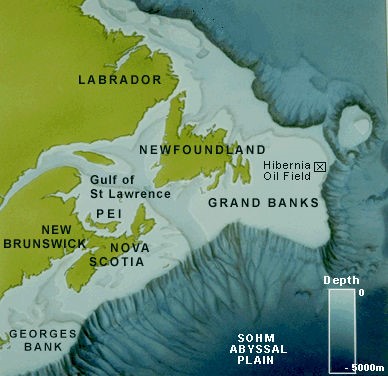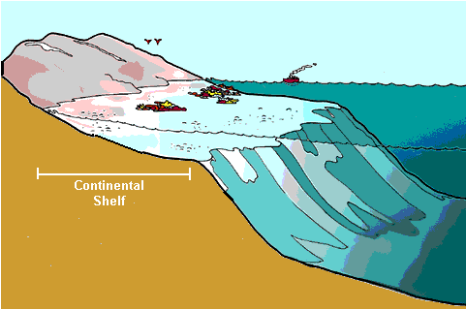mickael
Active Member
Where shall I get fish and chips from, for dinner, tomorrow? Somewhere downtown
Where shall I get fish and chips from, for dinner, tomorrow? Somewhere downtown
Fresco's! Or Sea Witch.
That sounds made up.
Where are these places? Never heard of them. Must be north of King Street.
Sea Witch was the last chip shop I went to. Maybe I'll try Fresco tonight!Fresco's is way out there in the boonies - Kensington Market.
Fresco's is way out there in the boonies - Kensington Market.
Was disappointed by Frescothe chips weren't too chip-shop like and the fish wasn't much to write home about, although I did walk through -10 with it for 15 minutes so maybe that had something to do with it.
The Current practice of fast and abstinence is regulated by Canons 1250–1253 of the 1983 Code of Canon Law. They specify that all Fridays throughout the year and the time of Lent are penitential times throughout the entire Church. All adults (those who have attained the 'age of majority', which is 18 years in canon law) are bound by ecclesial law to fast on Ash Wednesday and Good Friday until the beginning of their sixtieth year. All persons who have completed their fourteenth year are bound by the law of abstinence on all Fridays unless the Friday is a solemnity, and again on Ash Wednesday; but in practice, this requirement has been greatly reduced by the Episcopal Conferences because under Canon 1253, it is these Conferences that have the authority to set down the local norms for fasting and abstinence in their territories. The precept to both fast and abstain on Ash Wednesday and Good Friday is usually not dispensed from.)
Catholics may eat only one full meal on a fast day. Additionally, they are permitted eat up to two small meals or snacks, known as collations. Church requirements on fasting only relate to solid food, not to drink, so Church law does not restrict the amount of water or other beverages – even alcoholic drinks – which may be consumed. Church law on fasting has changed over the centuries since fasting is a discipline which may be altered by legitimate Church authorities.
Wonder, how many of us use Friday being a "fish day" or "abstinence from meat day" as an excuse to eat fish and chips?
From link.
Ash Wednesday, 2021 is on February 17th.
It always weirded me out that my parents refused to eat meat on Fridays. They would often make fish 'n chips instead, or boring-ass stuff like perogies.
Until recently, the east coast waters of Canada used to be one of the world greatest fishing grounds because of the great conditions the waters had. All of the great conditions combined created favorable waters for fish. Because of Atlantic Canada’s wide continental shelf (less than 200 meters in depth) and the shallow banks (less than 150 meters deep) within the shelf, the sun was able to penetrate to the bottom, causing a growth of plankton which attracts many fish. The east coast’s largest and best fishing region is called the Grand Banks, which has an area of 282 500 square km. This area is bigger than the island of Newfoundland which is 111 400 square km. The growth of plankton in this area was very easy because the meeting of the warm Gulf Stream and the cold Labrador currant caused a churn up from the bottom of the ocean of essential nutrients needed for plankton’s growth. Overall, for centuries the waters off the east coast have been known to be one of the world’s greatest fishing grounds for centuries. Two types of fisheries used in the east coast are the inshore and offshore fishery.


In the 80s, fish that were caught were in fewer amounts and the fish were smaller, and people in the east coast fishery were starting to notice that. Northern cod off southern Labrador and Newfoundland started to disappear. The catch of cod and other ground fish had declined in the late 70s, which later led to an unexpected collapse in 1991. The Canadian government took a stand in 1992 by stopping all fishing for northern cod as well as making big cuts in the catches allowed for other ground fish species. After the ground fish ban began, many people such as the government, scientists and the fishing industry guessed that the population of fish would eventually recover in around 5 to 7 years, but this has still not happened. In fact, cod stocks have remained below the 1992 levels, and it is feared that the levels will never recover. The fishing industry has tried to solve this issue by diversifying its catch. Other fish such as the shellfish (shrimp, crab), have been caught more often by fishers to reduce this issue. It is feared by fishery critics, that we may be overfishing these fish stocks too, due to the past cod issues.
Although there is no single cause responsible, there are many theories as to why there is a serious decline in the amount of ground fish. Fish are a renewable resource, which needs to be managed properly in order to keep a balanced population. If fish are caught at an equal amount that are born in a year, then they can be harvested forever. This technique is called sustained yield management. In eastern Canada this technique has obviously failed, but many people involved in the industry are trying to discover what went wrong so that they can improve for the future. There are five factors that people have suggested are responsible for the collapse in the fishery.
One factor is overfishing. Sustained yield management did not occur and more fish were caught before they could reach adulthood. This was because scientists took inaccurate estimates in the amount of fish that reached adulthood each year.
Another factor is improved fishing technology. Due to the development of faster, and more accurate technology created after world war two (satellite navigation systems, sonar), schools of fish were able to be located faster and less fish could escape the fishing nets. This technology made overfishing easier.
Another factor is uncontrolled foreign fishing. Countries with foreign fishing fleets like Russia and Japan caught more fish in Canada then sustained yield methods allowed. In 1977, the UN let Canada extend the control of their waters to 370 km, so they could protect their fishing stocks.
Destructive fishing practices is another factor. When trawlers would try to catch one type of fish such as cod, many different types of other fish might have gotten caught in the nets as well. These fish which were called “by catch” were mostly just thrown away.
The last factor is changes in natural conditions. The changes in environmental conditions have been blamed as a reason to why there has been a decline in fish stock. One reason is because water temperatures have dropped and the ocean salinity levels have changes since the 80s. Because of these changes, fish could have changed their migration routes to stay away from areas where this has occurred. Also, people suggest that since there was a decrease in the sealing industry in the 70s, the seal population increased. Because of this increase, the seals might have ate a large quantity of caplin which is one of the main food sources of ground fish. Less caplin meant less of a population of ground fish. The seals may have also ate a large amount of young cod, also decreasing the population of ground fish.

Aquaculture isn’t for everyone. Fish is the last hunted game we eat.The Blue Revolution would revolutionize fish & chips:




